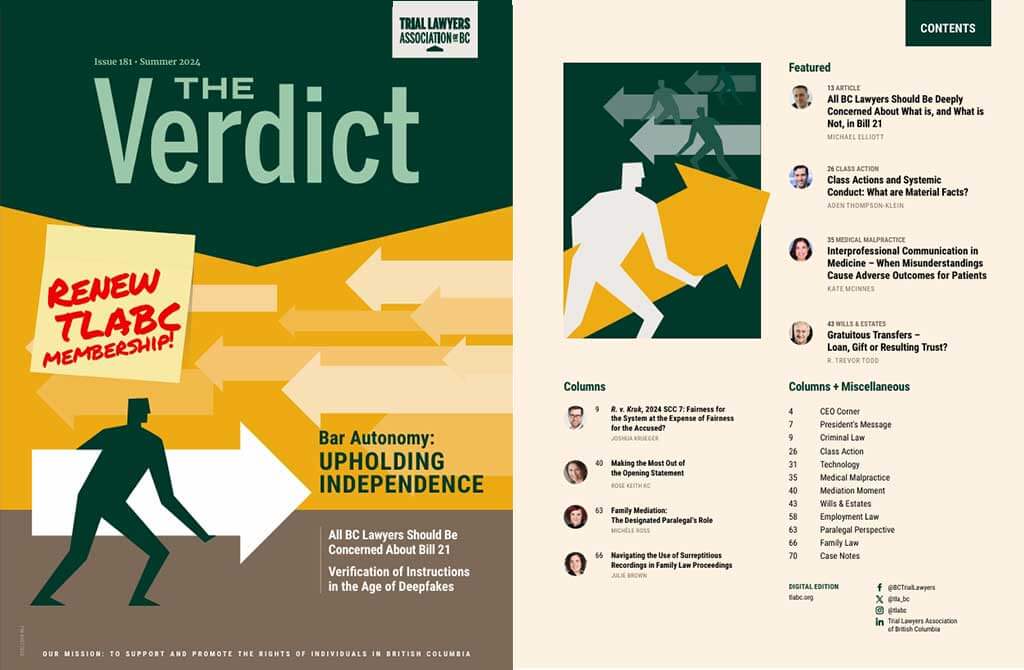
This is the ninth article in our series aimed at providing a detailed examination of the challenges and pitfalls in different areas of medical negligence lawsuits, and approaches to overcoming them. Each article will focus on specific injuries and highlight the obstacles a plaintiff faces in bringing their case to a successful conclusion. By comparing cases involving similar injuries, we hope to illustrate how the plaintiff succeeded, and, when they did not, provide strategies that may have been available to improve their chance of success.
This article will focus on cases where miscommunications have caused or contributed to a plaintiff’s injury. The importance of communication in facilitating Canada’s collaborative, team-based model of healthcare delivery, and the role that complete and accurate communication of patient information plays in defining the standard of care for physicians and nurses, will be explained using a recent obstetrical malpractice judgment of the B.C. Supreme Court as a case study.
Introduction
Healthcare in Canada is delivered through a collaborative, team-based model of care, in which different medical professionals, possessing diverse experience and expertise, respond to patient needs in a synergetic fashion. These teams may operate according to established templates, in the ordinary course of primary healthcare delivery (for example, the informal, two-person teams comprising of family physicians who prescribe medications and pharmacists who fill them), or they may be complex and ad hoc (for example, labour and delivery teams, which often include professionals specializing in obstetrics, pediatrics, nursing, family medicine, neonatology, and anaesthesiology). Under such a collaborative care model, the delivery of safe and effective healthcare is dependent on each team member competently fulfilling their individual duties. As one Manitoba court put it, “the health care system in place in Canada mandates that these professionals work as a team with each individual having a role in the provision of care to a [patient]. Each person must carry out their role within their appropriate standard of care and each of these professionals is entitled to rely upon (and must rely upon) the others to fulfill their respective individual responsibilities.”1
A duty that is common to all healthcare professionals working collaboratively, which has been affirmed by courts across Canada, is the duty to communicate all relevant patient information in an accurate and complete manner. The failure to do so can have cascading impacts on the performance of the team as a whole, leading to catastrophic outcomes for patients: one review of obstetric malpractice claims conducted by the American College of Obstetrics and Gynecology, for instance, found that 31% of adverse events were attributable to communication problems.2
Although communication errors may not be as obviously disastrous as, say, surgical errors, they can have devastating impacts on patients and their families. In an era where interprofessional communications are increasingly transmitted across new technologies and mediums,3 and in which medical professionals are increasingly reliant on team-based care given staffing shortages during Canada’s ongoing “health human resources crisis,”4 the potential impact of miscommunication among medical professionals involved in a patient’s care must be front-of-mind for plaintiff’s counsel when analyzing and arguing their case.

